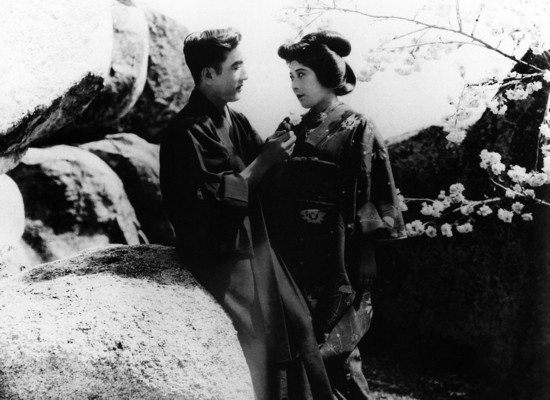

Reviews of Recent Independent, Foreign, & Documentary Films in Theaters and DVD/Home Video
Directed by William Worthington Produced by Sessue Hayakawa Written by Richard Schayer, based on the novel by Mary McNeil Fenollosa Music by Mark Izu Released by Millstone Film & Video With Sessue Hayakawa & Tsuru Aoki Special Features: Thomas Ince’s The Wrath of the Gods (1914, 60 mins.) with Sessue Hayakawa, Tsuru Aoki & Frank Borzage; restored tinted print courtesy of George Eastman House; score by Marco Lienhard. Comedy short: “Screen Snapshots” (1921, 5 mins.) with Hayakawa, Roscoe “Fatty” Arbuckle & Charles Murray. Photo gallery including illustrations from Fenollosa’s novel & images of turn-of-the-century Japan by legendary photographer Herbert G. Ponting. DVD-ROM: “How to Build Your Own Volcano”: recreate the climax of The Wrath of the Gods; press kit for The Dragon Painter; the novel The Dragon Painter; original script of The Wrath of the Gods; “Hollywood’s First Asian Cycle,” an essay by film historian Brian Taves Some 40 years before he became the first Asian male to be nominated for a Best Supporting Actor Academy Award (for The Bridge on the River Kwai), Japanese-born Sessue Hayakawa was at the height of his stardom, rising to fame almost a decade before Anna May Wong. This disc offers two silent films of America’s first Asian film star, both with memorably melodic musical scores. Hayakawa not only acted in but produced 22 films for the production company he formed with director William Worthington, Haworth, a combination of the two men’s names. The company lasted only a few years; according to the DVD-ROM essay, Haworth’s distributors allegedly tried to kill the actor for the insurance money. Only one print, rediscovered in France, survived of the company’s fluidly directed The Dragon Painter from 1919. Riding the wave of turn-of-the-century Eastern exotica, the story first appeared as a 1906 novel, published just a few years after the hit Broadway play Madame Butterfly became opera’s Madama Butterfly. Yosemite Valley beautifully stands in for the Hanake Mountains, home to the free-spirited, if not mad, Tatsu (Hayakawa), who believes spirits have abducted his princess (one thousand years ago) and turned her into a dragon, whose image he paints. He’s lured by a surveyor – knowing that the famous and aging illustrator Kano Indara is searching for a disciple to carry on his art – with the promise of being reunited with his princess. The regal Indara, the last of a line of famous painters, marvels at Tatsu’s work, and has no qualms masquerading (some might say pimping out) his obedient daughter (played by Hayakawa’s real-life wife, Tsuru Aoki) as Tatsu’s lost love, but before he gives his daughter’s hand in marriage Tatsu must first become his apprentice. The wild-haired artist cleans up rather nicely. No longer untamed, he marries the girl, but his gift vanishes; he no longer has the passion to paint. As one title card states, “Love must be art’s servant.” Remarkably, it took several minutes for me to realize that the actor playing Indara was white. He’s heavily made up, but as an old man with grey hair and whiskers – no prosthetic eyelids or arched eyebrows. The actor, Edward Peil, was only 36.
The second feature, The Wrath of the Gods, is a 1914 precursor to the disaster movie, concluding with the eruption of Sakura-Jima, an event which
actually occurred earlier that year. It features slower pacing and stock acting poses less graceful than in The Dragon Painter, but the film
doesn’t condescend or condemn the biracial love affair between a sailor washed ashore, all-American Tom Wilson, and Japanese Toya San (again played
by Aoki ). (And that’s 24-year-old Hayakawa as her father underneath the makeup.) In fact, the melodrama ends happily, with
the couple surviving the volcanic eruption. Frank Borzage, who plays Tom, later went on to win the first best directing Oscar, and producert
Thomas Ince, unfortunately, is better known for his mysterious 1924 death aboard William Randolph Hearst’s yacht.
Kent Turner
|